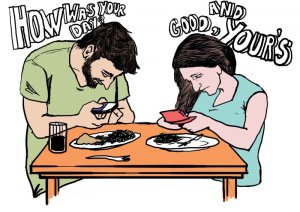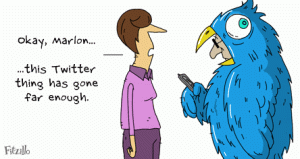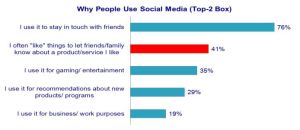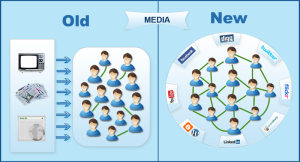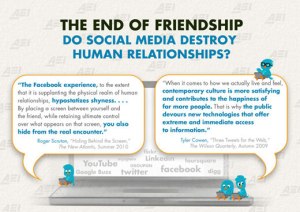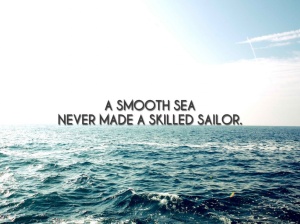From my own experience launching, and managing, both a Facebook page and a Twitter page for a client I got a few good ideas. This client was an online media audio venture so, for us, Facebook posts were a great way to share interesting content and build conversations around the topics that were being discussed in their audio operation. We used plenty of rich media aids in our Facebook posts and the posts with pictures, audio and/or video attached got way more shares and likes than just plain text ones.
Twitter was great to get the “in the moment” feel of the audience and run fast contests with our followers (like guess which movie this song playing live is from), as well as get questions in for audio q&as what were going on live.
We grouped our actions to follow this pattern. Facebook for shares about stuff that happened, to increase the reach of the content and get more eyes, ears and hands involved with it. In other words: build conversations around our pieces and increase their reach like this. Twitter to get fast responses on things that were going on right now and direct people to what was happening in the moment.
Of course we cross posted on both platforms sometimes, but we always went the extra mile to customize the posts to fit in with each platforms strengths. Examples: hashtags, pictures and links in Twitter; pictures, audio and video more on Facebook.
We used Hootsuite to manage both of our accounts and schedule posts so they could happen in hours were people’s timelines were probably less crowded or to coincide with specific content being featured on the audio website live. Tools like this made our lives easier and also allowed us to follow up on our posts and engage with users answering questions and acknowledging comments to keep the conversation going (and take advantage of the “two-way” channel that both these platforms represented.
Time Magazine published a few best practices for Facebook and I’m happy to see that some of the ideas we used with our client hold true. They recommend: 1) Target your Posts (choose audience that will see them), 2) Use photos, but make them original, 3) Post at Odd Hours, 4) Start a Conversation, 4) Be engaging, 5) Cross-promote with other pages, 6) Hop on a trending topic and 7) Buy an ad.
Nimble also suggests a few Facebook strategies. Among their recommendations: 1) Post engaging images, 2) Include a photo album, 3) Post a video, 4) Use short text, 5) Analyze data about your top posts to see why they achieved such great results.
Mashable also jumped in with a few tips of its own. 1) Embrace images, 2) Make the most of your cover photo, 3) Learn using Facebook insights, 4) Highlight or pin your best posts, 5) Get your apps in a row, 6) Run contests to boost engagement, 7) Drop in those milestones and 8) Embrace your fans. They even highlight a few great ideas they’ve seen brands use on Facebook: Red Bull launching a scavenger hunt game on Facebook, Old Spice doing status updates that are funny and quirky just like their brand image, ESPN’s use of “fill in the blank” posts to engage fans and Coca-Cola encouraging fans to solve riddles on their timeline.
My own compiled list of Facebook best practices:
1) Groom your page, change your images to reflect your current ideas and content. Be impactful. Also, be respectful.
2) Fill in the information on your page. Have a YouTube page, link it there, have an App link it there, have a homepage link it there, make your relevant information easy to access.
3) Use photo albums, organize your content and tell your story.
4) Be brief, use short phrases and make use of this “brevity” challenge to be great at copyrighting.
5) Use images, audio and video, original ones, great ones, impactful ones.
6) Read up on the Facebook insights (data) about your page, know what works (and what doesn’t) for you. Learn from your successes and from your mistakes.
7) Start debates with a short question and keep things moving on the comments.
8) Ask questions, important ones, fun ones, and turn your comment section into a virtual coffee shop.
9) Post in a timely fashion, not too much and not too little. Use your own team to follow your page and see how your posts fare on their timeline. Don’t overload, but also don’t let cobwebs grow on your timelines (stale content is the worst).
10) Last, but most definitely not least, answer back to people. Don’t leave those that engage with you in a void. If people take the time to talk to you, answer back and keep the ball rolling.
Sources: http://time.com/48358/facebook-marketing-eight-ways-to-get-posts-seen-more/
http://www.nimble.com/blog/posting-and-analyzing-on-facebook/
http://mashable.com/2012/05/17/facebook-timeline-brand-tips/


